When you think about Jewish food, do you imagine a steaming bowl of matzo ball soup, a hunk of brisket, maybe some gefilte fish and bagels with lox? Those are all delicious dishes but they represent food that's mostly eaten by Ashkenazi Jews, whose origins lie in Central and Eastern Europe. From Baghdad and Buenos Aires to Montreal and Mexico City, the Jewish diaspora encompasses an array of cultures with food and traditions that span many global cuisines.
Naama Shefi showcases many of them in her new cookbook, The Jewish Holiday Table, which she put together by reaching out to Jewish chefs and home cooks around the globe. Since launching the Jewish Food Society in 2017, she has dedicated herself to documenting and preserving Jewish food in all its global, diasporic glory.
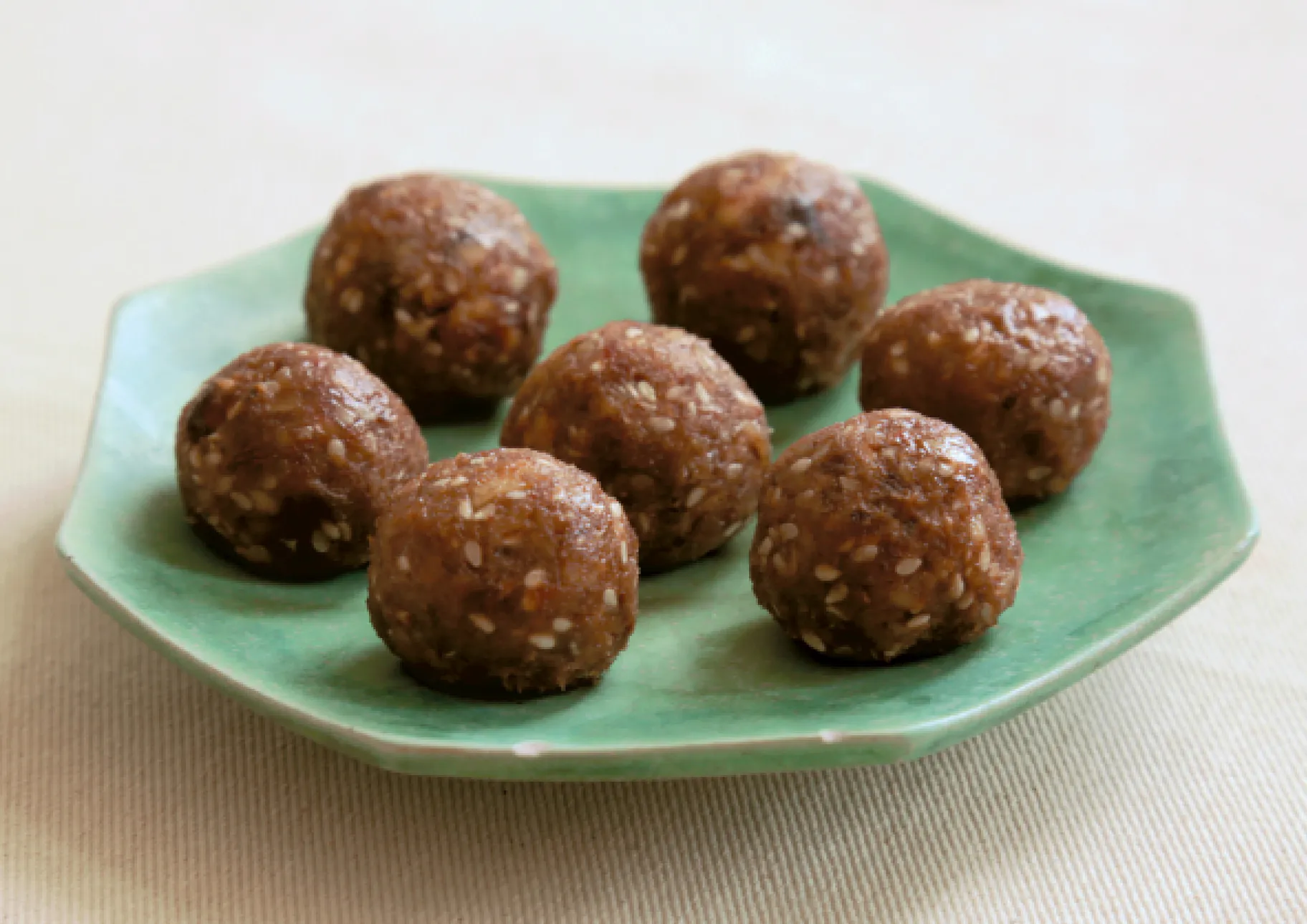
The book “The Jewish Holiday Table” explains how to make charoset balls. Photo by Naama Shefi.
"When I arrived to New York City in 2006, I was really amazed by how people thought about our food. Oftentimes, people think about a very narrow definition of Jewish food [i.e. Ashkenazi] but when I think about Jewish food, I think about Yemeni, Iraqi… Wherever Jewish people lived across the diaspora, they developed their own micro-cuisine."
Although this book is about global flavors, Shefi has organized it seasonally rather than geographically — Fall, Winter, Spring and Shabbat. Why? "Because I think that holiday cooking is the backbone of Jewish food," Shefi says. "This is where we can see dishes that are uniquely Jewish and are meant to celebrate the different Jewish holidays. Also, the Jewish calendar is extremely seasonal and you see it in the food."
Since we're approaching Passover, chef Rinat Tzadok's Charoset Balls were an obvious draw. Although there are many ways to make charosets, it's uncommon to see them done like this, so that they resemble Paleo-friendly energy snacks. Tzadok drew inspiration from her Moroccan and Yemenite grandparents, using cardamom, sesame seeds, dates, and hazelnuts to make charosets, then shaping them into truffle-sized balls.
Charoset Balls
Makes about 3 dozen 1-inch (2.5 cm) balls
During the Passover Seder, foods like bitter herbs, matzah, and charoset-a sweet paste made from fruits and nuts-help tell the story of the Exodus from Egypt. There are different interpretations of the symbolism of charoset, but it's most often seen as representing the mortar the Jews used for constructing buildings when they were slaves in ancient Egypt. The custom of eating charoset is ancient. As the late culinary scholar Gil Marks explained in his Encyclopedia of Jewish Food, it was widespread as early as 200 C.E.
There are countless ways to make charoset.
Jewish cooks across the Diaspora have prepared it with the various ingredients available to them-apples and walnuts in Eastern Europe, dates in parts of North Africa and the Middle East. Rinat's charoset draws inspiration from both sides of her heritage. The cardamom and sesame seeds, she notes, are from her Yemenite famiy, while the dates, almonds, and hazelnuts come from the Moroccan side. Like her mom, Rinat forms the charoset into snack-sized balls, which can be enjoyed at Seder or anytime as an energy snack.
Ingredients
- ½ cup (55 g) raw walnuts
- ½ cup (55 g) blanched raw almonds
- ⅓ cup (40 g) blanched raw hazelnuts
- ¼ cup (30 g) raw sesame seeds
- 1 cup (200 g) Medjool dates, pitted
- ½ teaspoon ground cinnamon
- ¼ teaspoon ground cardamom
- ¼ cup (60 ml) sweet red wine
- 1 tablespoon honey
Instructions
-
Preheat the oven to 300°F (150°C). Line a baking sheet with parchment paper.
-
Spread the walnuts, almonds, hazelnuts, and sesame seeds on the baking sheet and toast in the oven, stirring once or twice for even toasting, until aromatic and golden, about 10 minutes. Remove from the oven and set the nuts aside to cool.
-
Meanwhile, put the dates in a small heatproof bowl, cover with boiling water, and soak for 5 minutes to soften. Drain the dates thoroughly.
-
Put the dates, walnuts, almonds, hazelnuts, sesame seeds, cinnamon, cardamom, wine, and honey in a food processor and process the mixture until it forms a paste that’s uniform but not completely smooth. If the mixture seems too dry, add up to 1 tablespoon hot water and process a bit more (but you want the mixture to be stiff enough to roll into balls). Transfer the charoset to a bowl, cover tightly, and refrigerate for at least 20 minutes, and up to overnight.
-
To shape the balls, coat your hands with a bit of neutral oil, scoop up a heaping teaspoon of the mixture, and roll the charoset into 1-inch (2.5 cm) balls. The charoset balls can be stored in an airtight container in the fridge for up to 2 weeks.
-
Arrange the charoset balls on a serving plate and serve at room temperature.
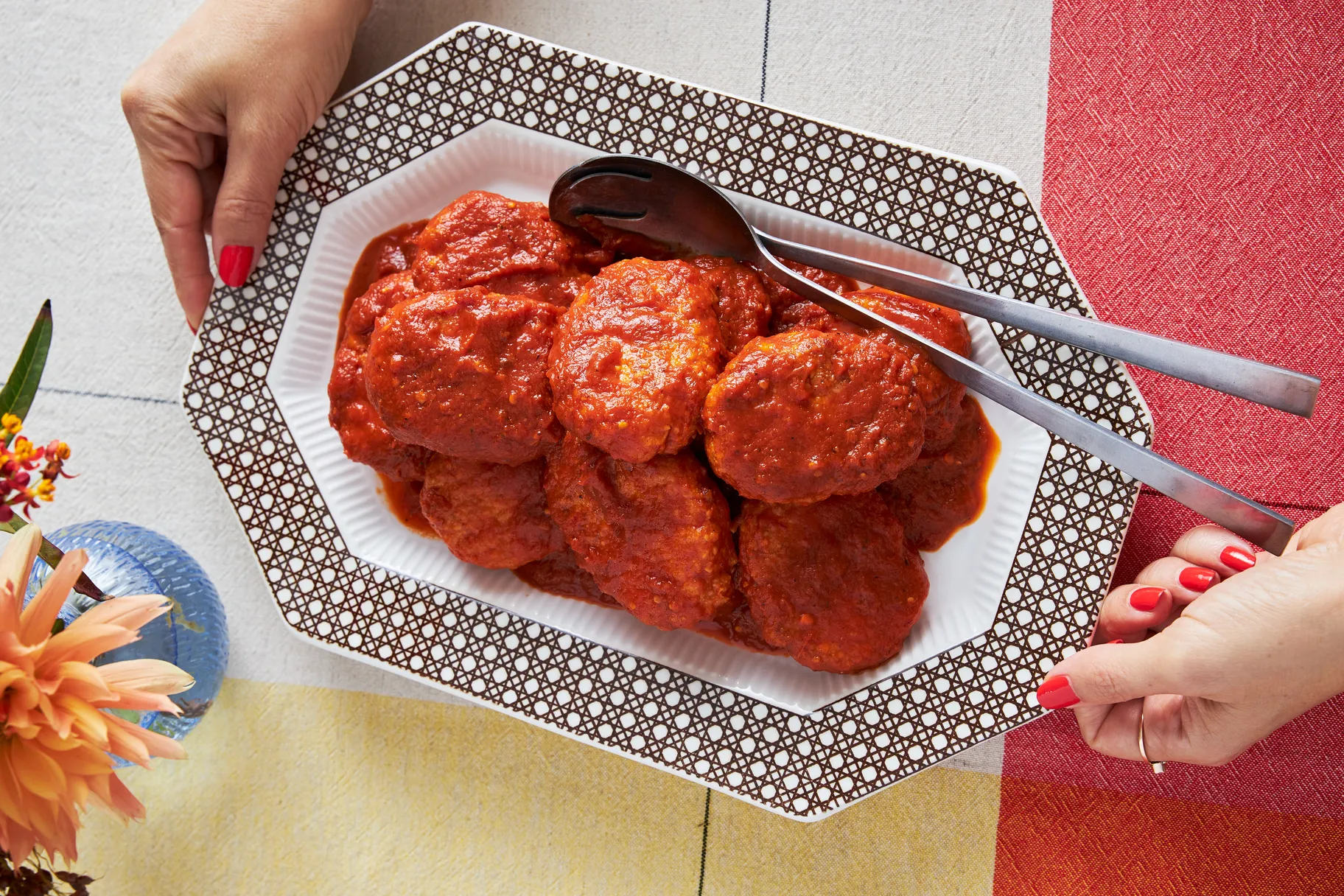
This gefilte fish in spicy tomato sauce is made with dried chipotle and guajillo chilies, combining Ukrainian and Mexican ingredients. Photo by Penny De Los Santos.
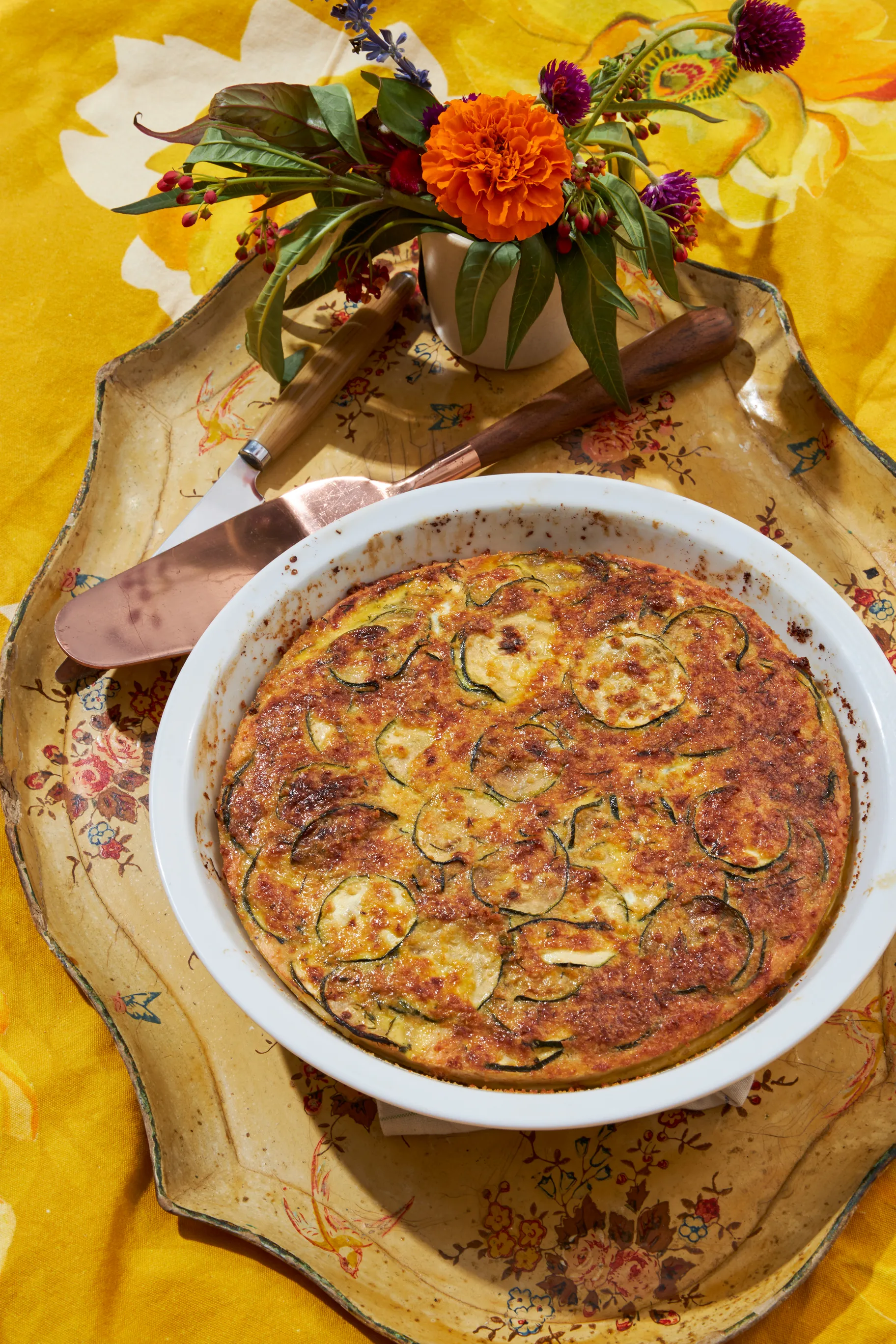
Zucchini pashtida, which is made with eggs, Greek yogurt and of course, zucchini, is essentially a crustless quiche. Photo by Penny De Los Santos.
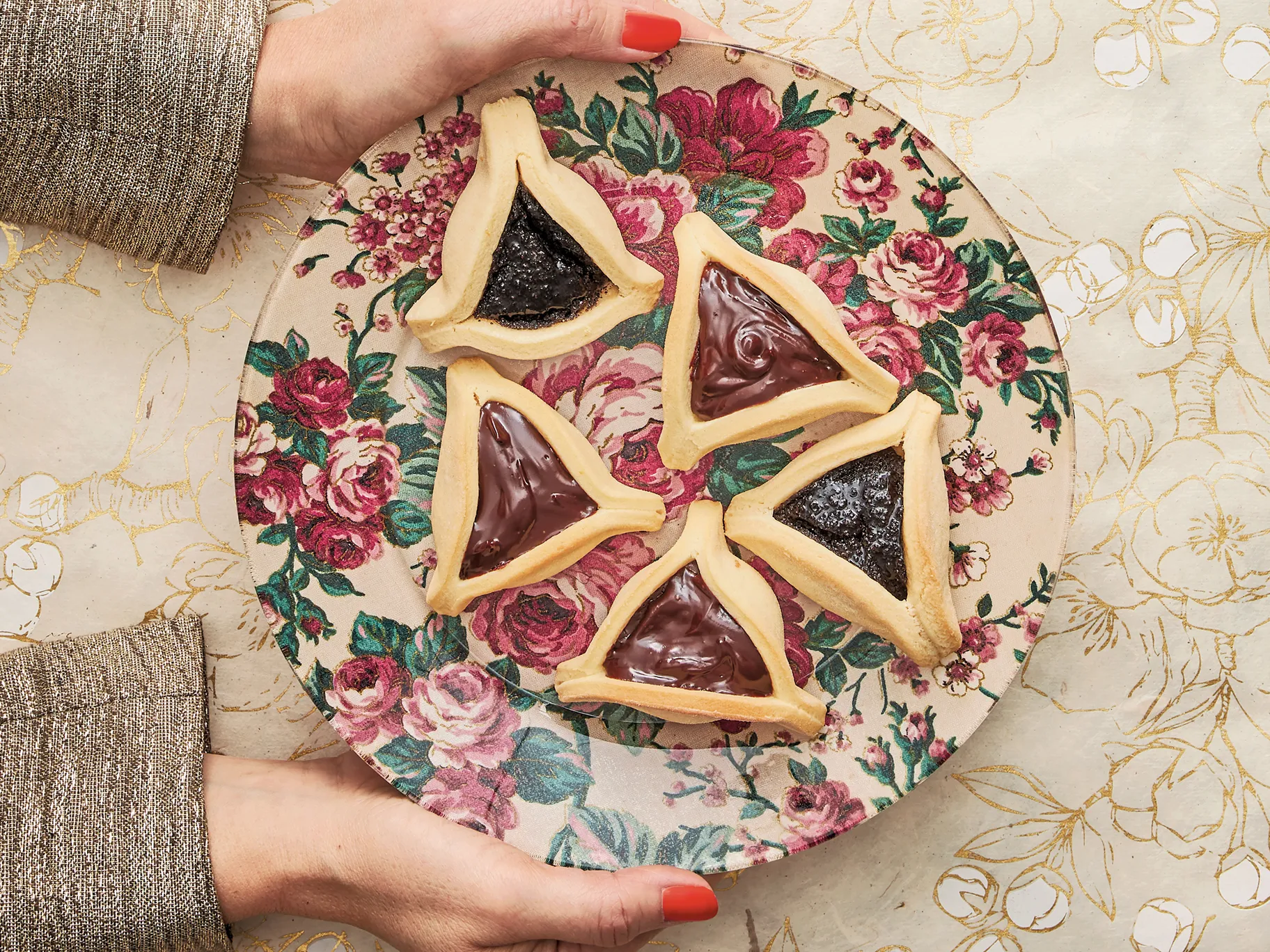
These hamantaschen, triangular cookies made during Purim, are filled with gooey chocolate ganache or poppyseed paste. Photo by Penny De Los Santos.
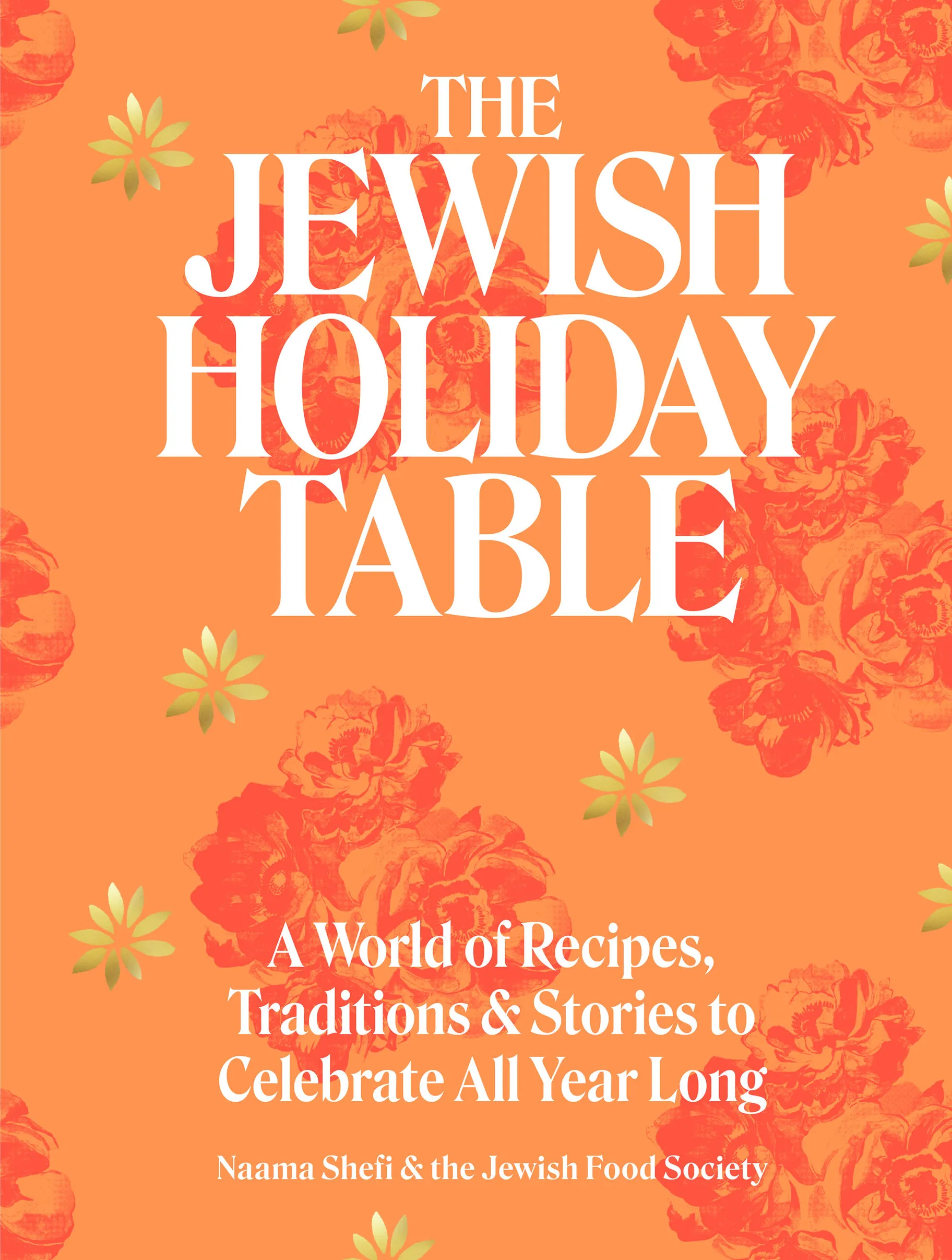
In "The Jewish Holiday Table," Naaama Shefi catalogs Jewish food in all its global, diasporic glory. Photo courtesy of Artisan Books.
